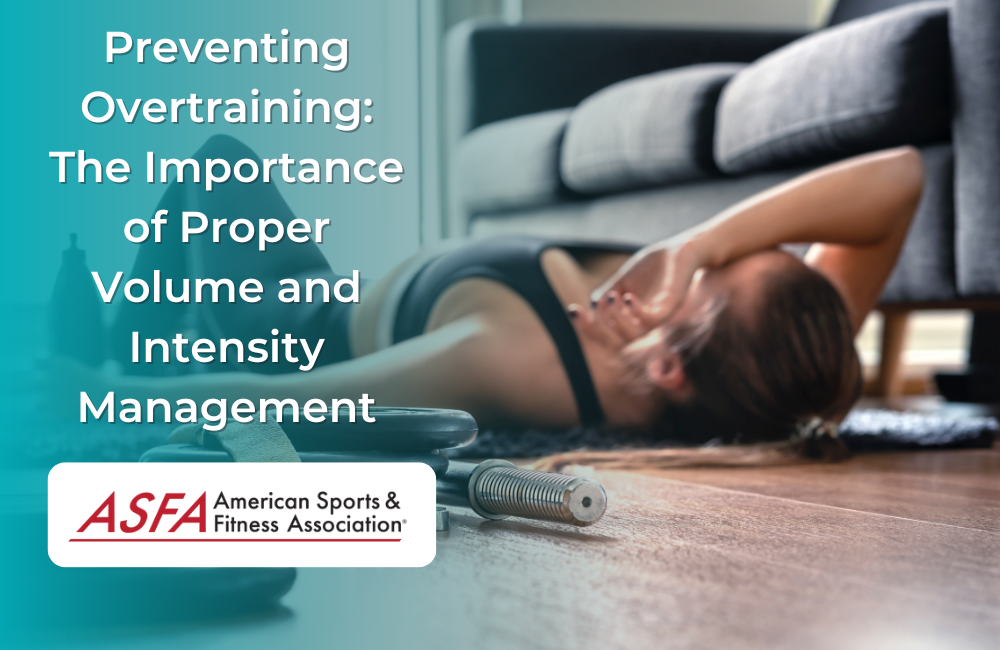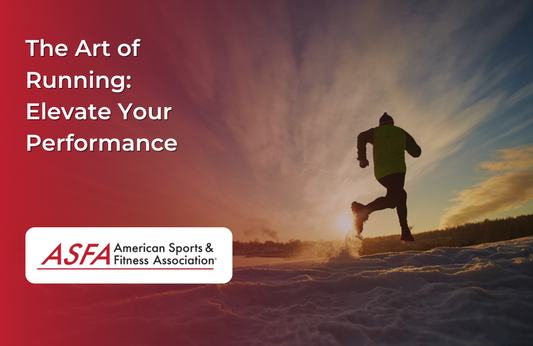Overtraining is a serious issue that can ruin an athlete's career and negatively affect their mental health. Overtraining occurs when athletes train at an intensity level that is too high for too long. It is important to not only know what overtraining looks like but also understand how to prevent it from happening in the first place.
What is Overtraining?
Overtraining is a condition that occurs when you push your body too hard. The result is not just fatigue but also decreased performance and increased risk of injury.
Overtraining is often associated with increased training volume, intensity, or both. In other words, if you're doing more work than usual- running longer distances or lifting heavier weights- your risk of overtraining goes up significantly.
Overtraining can occur at three different levels of intensity.
There are three different levels of intensity at which you can overtrain:
- Overreaching. This is the least severe form of overtraining and involves increased training volume and/or intensity, leading to fatigue but not necessarily performance loss. An example would be doing more cardio than usual without making any other changes to your routine, like eating better or adding weight training sessions into your week.
- Overtraining syndrome (OTS). This is when all aspects of training have been increased above normal levels for an extended period without adequate rest or recovery between workouts. It can lead to decreased performance and even injury if left untreated; however, it's important to note that many athletes experience some degree of OTS during their competitive season due to heavy loads on their bodies throughout months-long periods.
- Acute overtraining syndrome (AOTS). This occurs when athletes push themselves beyond what they're capable of recovering from within one week or so and require immediate intervention before symptoms become irreversible damage that may take months or years off their lives.
How Does One Know If They Are Overtrained?
- Fatigue
- Decreased performance, especially in the gym or on the field
- Increased susceptibility to illness (cold/flu)
The importance of proper volume and intensity management.
To prevent overtraining, it's crucial that you manage both the intensity and volume of your workouts. While many athletes will follow a general guideline for each, it's important to understand that each individual has different needs.
The most basic way to approach intensity management is through monitoring heart rate. Exercising at 50-85% of your maximum heart rate (220 - age), which means if you're 30 years old, your target zone would be between 130 and 170 beats per minute (bpm). This can be monitored by wearing a heart rate monitor or checking your neck or wrist pulse when exercising at various intensities.
Knowing how to recognize and manage overtraining can help prevent it from happening in the first place.
There are a few ways to recognize and manage overtraining.
- Recognize the symptoms of overtraining. Overtraining can cause fatigue, muscular soreness, and other symptoms, such as insomnia or irritability. If you notice these signs, take a rest day from your workout routine and focus on resting and recovering instead of exercising until you feel better.
- Plan for proper nutrition and sleep habits so your body has the nutrients to recover from exercise sessions without becoming fatigued or injured from too much activity at once (which may also lead to further overtraining).
Physiological symptoms of overtraining include muscle soreness, fatigue, and sleep disturbances.
- Muscle soreness: This is the most common symptom of overtraining and can be present in any muscle group. It's caused by micro-tears in the muscle fibers and can last anywhere from 24 hours to several days.
- Fatigue: Although it may feel like you're doing everything right if your energy levels are down and/or you have trouble completing workouts or activities that used to be easy for you, it could mean your body needs rest. Sleep disturbances such as insomnia or waking up at night can also indicate that too much stress has been placed on your body during exercise sessions.
- Sleep disturbances: Because sleep plays an important role in recovery from exercise, inadequate rest will make it difficult for your muscles to rebuild after hard workouts, so they become less effective over time
Mental symptoms of overtraining include irritability, depression, and anxiety.
Mental symptoms of overtraining include irritability, depression, and anxiety. These are more common than physical symptoms and can be harder to recognize because they're less specific than the typical signs of overtraining. For example, if you're feeling depressed or anxious after a workout session that didn't leave you feeling exhausted or sore afterward--or even if it did--it's possible that this is a sign of mental fatigue from training too hard for too long without adequate rest.
Mental fatigue can also be caused by other factors, such as lack of sleep or inadequate nutrition (which may be due to poor eating habits). In these cases, it might not be due to overtraining at all; rather just another way your body needs time off from exercise so that it has time to recover fully before starting back up again.
The longer you wait to rest after an injury such as a muscle strain or sprain, the more likely you will get injured again soon after recovering from the initial strain or sprain.
The longer you wait to rest after an injury such as a muscle strain or sprain, the more likely you will get injured again soon after recovering from the initial strain or sprain. This is because your body needs time to repair itself and recover from stress. Rest is important for muscles to grow stronger and become more flexible.
Your body will also need rest if you've been doing too much physical activity for too long without giving yourself some time off between workouts. Overtraining can lead to burnout, which can cause mental and physical exhaustion; this makes it harder for your body's immune system to fight off illness or injuries because it becomes overwhelmed by everything else going on inside (this includes repairing damaged muscle fibers).
Recovery Methods to Help Prevent Overtraining
Recovery methods to help prevent overtraining include:
- Rest. This is the most obvious way to recover from exercise, but it's also often overlooked by athletes. Ensure you get enough sleep and that your recovery days are well-planned so you don't push yourself too hard during workouts.
- Massage. If you have access to a massage therapist or know how to give yourself a good rubdown, massages can help relieve muscle soreness after intense workouts by increasing blood flow and relaxing tense muscles.
- Ice therapy. Ice treatment is another way of reducing inflammation in the body after intense training sessions.
- Heat therapy/hot baths/saunas (with caution). Heating up your body helps increase circulation and relaxes tight muscles.
Conclusion
To prevent overtraining, knowing how much recovery time you need and what activity level will work best for your body is important. Rest days are vital for athletes who want to stay healthy and perform at their best. If you're feeling tired or sore after a workout, take some time off before returning to your usual routine!




